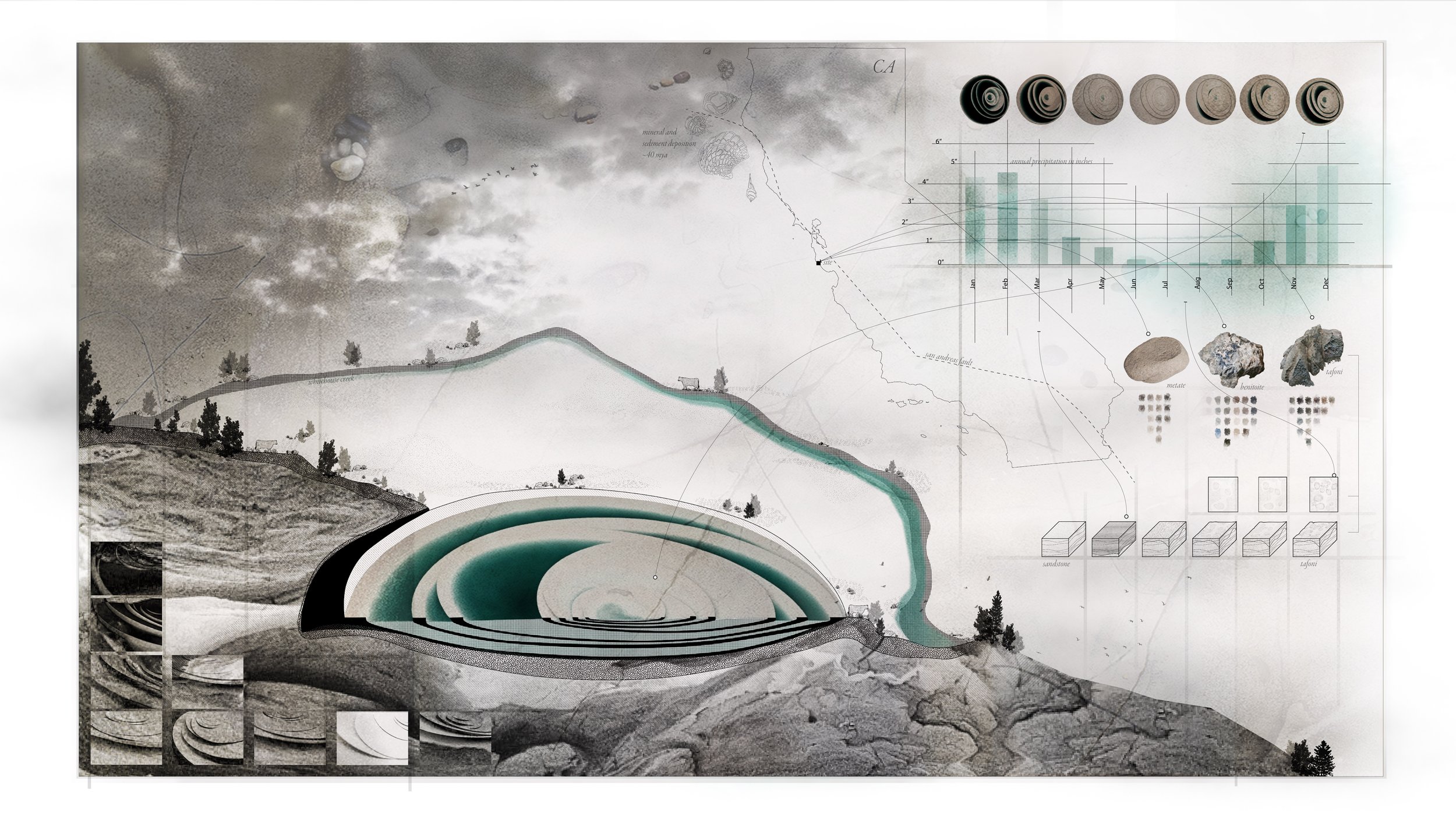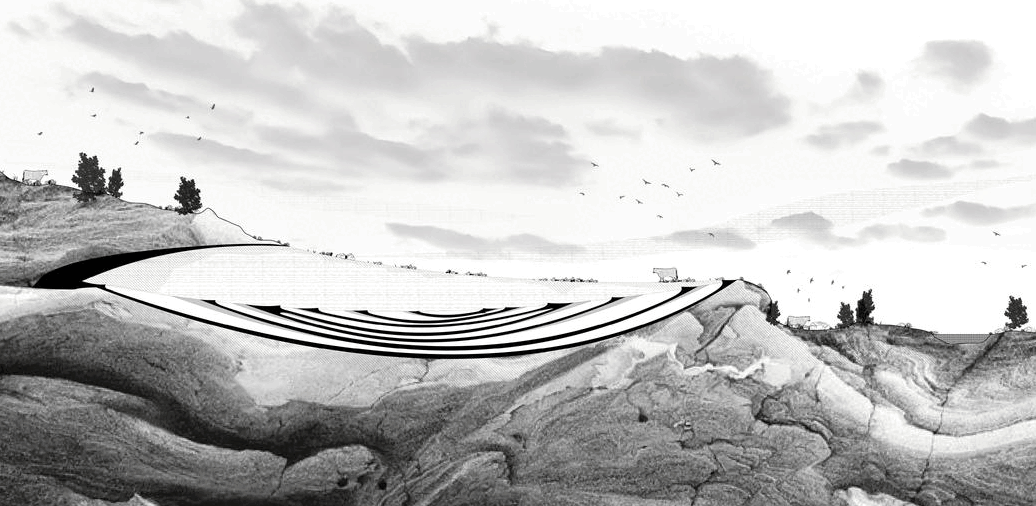
Seasons of the Subterranean
40 million years of pressure, and movement has compacted sediments into sandstone. It has been elevated, uplifted and shifted north from the violent friction of the San Andreas Fault, forming the Santa Cruz Mountains. Any imperfection is scoured by the elements, it is an opening that reveals and releases loose grains, allowing voids and caverns to be formed. Pits, pockets and ribs merge with one another, form adjacent to one another, and nest within one another. Each season of rain followed by dry heat exacerbates, creates, and morphs these formations. One begins to contemplate scale and the associative relationships between different caverns and voids.
Santa Cruz, California
MIT Options Studio taught By William O’Brien Jr.
Spring 2022

This stepping of void into void transitions one’s experience from that of light, warmth to depth, darkness and cooling temperatures. One begins to wonder what sensations would be experienced in the spatial condition of vertical stepping. What if water was to fill these spaces within spaces? Stepwells and Labyrinths inform this work which embraces stacking as a form of nesting and choreography of circulation. As one encounters this intervention in the landscape, they navigate to the rim of a water basin. Looking towards the water, one can see a series of nested basins, only reachable in moments of tangency, when one basin’s edge gently joins that of the basin it is nestled within.
Winter months bring precipitation which collects in the basins, water level correlating to the calendar and annual climactic fluctuations. If one basin overfills it simply pools over into that which it is nested within. With time, the rain ceases, and clouds dissipate. Months pass and evaporation becomes evident. The nested basins provide shade and cooling, retaining water long past the end of the rainy season. That is until the basin is overcome by the months of summer heat, and a change of season is on the horizon. Year after year, basins fill and dry, their condition entirely dependent upon the environment. The ceaseless sequence spurs connection to the calendar, and seasonal change.

From saturation to dehydration, basins are experienced across a spectrum of climactic extremes. They are traveled along subtle elevation changes and the curves of their extremities. And bridged by traversing the tangents of the nested spaces. The seasons, water holding, and spatial conditions are all tied, the experience embedded within seasonality, environmental fluctuations, and the great force of weather patterns beyond human control.



















